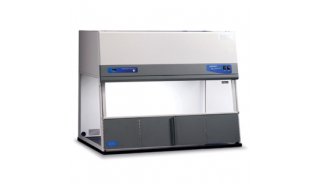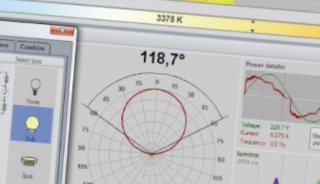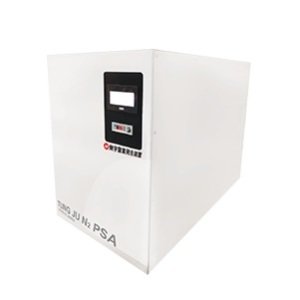Use of Semi-Thin Cryosections for Light Microscopy.Semi-thin sections can be obtained from frozen blocks of cryoprotected biological material by sectioning at -90°C. The advantages for using these sections for light microscopy are that the subcellullar morphology is preserved and the optical resolution is improved. Chemically fixed biological material is cryoprotected by immersion in 2.3 M sucrose and frozen onto specimen pins by immersion in liquid nitrogen. The sectioning is performed in a cryo-ultramicrotome with the thickness control of the ultramicrotome adjusted to cut thicker sections (0.3 to 1µm). Once the sections have been obtained, they are removed from the knife using a sucrose droplet but instead of being placed on specimen grids they are placed on glass slides. The glass slides should be marked with a diamond pencil on the side where the sections will be placed (mark the glass, wash and then coat the glass). After cleaning with detergent and water they may be coated with either gelatin, poly-L-lysine or alcian blue. For the first of these, a drop of 1% gelatin is smeared onto the glass slide using a second slide and air dried. For the other two methods, see below. Coating the slides may ensure that the sections stick to the slides during the labeling procedure.
Immunolabeling of Cryosections on Glass Slides.
Immerse the slide, with sections on, into a Coplin jar containing PBS. This will wash away the sucrose. Immerse the slide into PBS containing 50mM ammonium chloride in order to quench free aldehyde groups. Immerse the slide into PBS containing a blocking agent (eg 1% gelatin). Remove the slide and dry the surface of the slide such that the sections and the area around them remain wet. It is important that the sections do not dry out. Put 10µl -20µl of diluted, centrifuged antibody onto the sections and leave in a moist atmosphere for 15 min to 24 hr. Wash the antibody away with fresh PBS (in a Coplin jar). Repeat the antibody incubation and washing steps (steps 4 and 5) with the secondary fluoresceinated antibody. Mount the slides in 90% glycerol in PBS or wash with water and mount in Moviol or Permount containing an anti-fade compound. This will produce a permanent mount where the fluorescent signal is not easily bleached when exposed to UV light.
Problems with AutofluorescenceIf the material under study was fixed with glutaraldehyde then autofluorescence will be present. This can be removed by treating the sections with 0.1% sodium borohydride in PBS (pH 8). Borohydride stock solutions can be stored indefinitely at pH 12. At pH 7 the molecules have a half life of 10 seconds. At pH 8 the half life is 100 seconds. If the autofluorescence is from the tissue, then gold- or enzyme-conjugated antibodies can be substituted for the secondary fluorescent antibodies. In this way the antibody binding can be visualized using silver enhancement to reveal the gold, or enzyme cytochemistry to produce a colored reaction product in the tissue slice. Poly-L-lysine Coating of Glass SlidesDissolve 10 mg of poly-L-lysine in 100 ml of distilled water. Leave the clean, marked slides in this solution for 30 min. Either air dry without washing or rinse briefly in distilled water.
Alcian Blue Coating of Glass Slides.Make 0.5% alcian blue stock solution Dilute this solution 1:100 with distilled water Dip the clean, marked slides in the dilute solution for 10 min. Briefly rinse the slides in distilled water. They will remain slightly blue after this wash. Dry before use and only use freshly prepared slides.
|




















